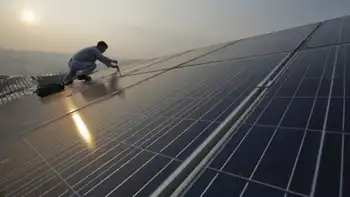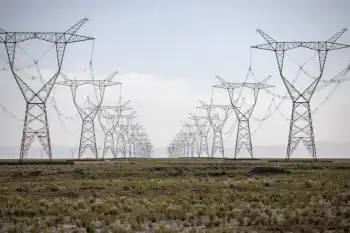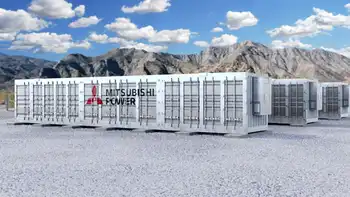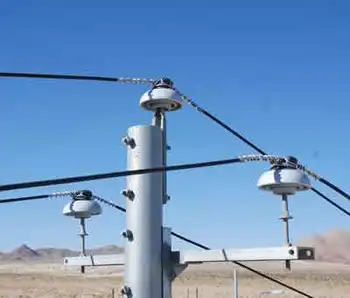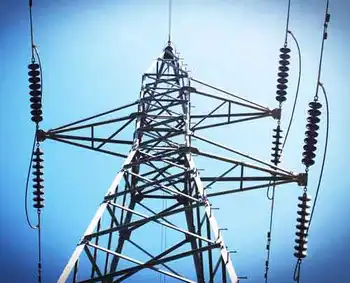Africa: Powering the continent with nuclear energy
By New Era
Electrical Testing & Commissioning of Power Systems
Our customized live online or in‑person group training can be delivered to your staff at your location.

- Live Online
- 12 hours Instructor-led
- Group Training Available
High oil prices can create economic stagnation. "Global oil consumption will climb by 3.5%, mainly because of buoyant economic growth of China and India." (The World in 2008: The Economist).
But, in this 'age of global warming', our planet demands an eco-friendly energy mix. Understanding this reality, the global interest in nuclear power will increase in 2008 led by the United States, European Union, and Japan. Also, China alone decided to construct 30 nuclear reactors during the next decade.
World Gross Domestic Product (GDP) in 2004 was US$44,156 billion and Sub-Saharan Africa's (SSA) GDP was around US$600 billion, which is 1.3% of the global GDP.
Also, it is very close to Belgium's GDP of US$447 billion. Rich OECD (Organization for Economic Corporation) countries such as the USA, France, Germany, Canada, Japan, and South Korea have generated 78% of the global GDP.
Few countries in SSA, namely South Africa, Botswana, Angola and Namibia could register a reasonable economic growth. In 2004, the GDP of South Africa was US$240 billion and it is 45% of the Sub-Saharan GDP. Nevertheless, Africa is a resources-rich continent of which 50% of the population lives on less than one US Dollar a day.
Africa's growth depends on three factors: edu-reforms accommodating mathematics, science and technology, establishment of a knowledge-based economy and a reliable energy supply, presumably the Nuclear-based Energy Mix (NBEM).
African countries' power condition is expected to become more critical by next year, when demand in the region is expected to exceed the combined supply of 45,000 MW from the Southern African Power Pool.
Nathaniel Maphathe, chairman of the South African Power Pool (SAPP) Management Committee, has expressed his worry over the diminishing electricity supply in the SADC region at the 29th SAPP symposium in Namibia. Eskom, the South African power utility's electricity generation capacity is 39,810 MW and it is inadequate to cope with the rising GDP (around 6%), new housing schemes, World Cup Project, energy-intensive mining and manufacturing industries.
In 2006, South Africa's top tourist city Cape Town suffered a power outage due to the faults in its 1800 Megawatt Koeberg nuclear power reactor. Recently, South Africa's national power utility, Eskom was forced to disconnect its power supply to Botswana, Zambia and Namibia damaging their core-economic sectors - mining, manufacturing and service industries.
Moreover, the latest blackout that disturbed the football match between Benin and Mali in Ghana was another indication for the future energy crisis.
Therefore, African countries should revisit their hydro-carbon-centered energy policies to avoid economic meltdowns.
Nuclear power died in the last century. But the unpredictable oil prices and global warming are driving a nuclear rethink in the west. The anti-nuclear energy lobby is now busy beating their green-drums over carbon emissions.
Coal generates 40% of the global energy supply. Hydro-electricity provides another 20% and renewable (e.g.solar, wind, and bio-gas) generates around 1%.
Presently, 6.5% of the world's energy comes from 440 nuclear reactors across the world. China and India who lifted millions from poverty, wish to sustain their economic growth via nuclear energy.
Countries that generated electricity by reactors in 2006 are: France
78%, South Korea
38%, Germany
32%, Japan
30%, USA
20%, UK
19%, Russia
16%, Canada
15%, China
3%, India
2 %.
Today's global economic growth will not be sustained without reliable energy sources. Hence, 40 countries world wide use their 440 nuclear reactors to generate 2,658 billion kWh of electricity. (www.world-nuclear.org)
France generates 78% of its electricity from 59 nuclear reactors with the total capacity of more than 63 GWe. It is the world's largest electricity exporter and earns EUR 3 billion per year. France exports advanced reactors, nuclear fuel and nuclear waste management technology and reactors' maintenance services for the world market.
Currently, the importance of nuclear energy in the USA is geopolitical as much as economic. Furthermore, it reduces America's dependency on imported oil and gas. Asia's nuclear power generation projects are growing significantly. As of today, there are 109 reactors in Japan, South Korea, North Korea, China, India, Pakistan, Malaysia, Indonesia, Philippine, Vietnam and Bangladesh. Asians are very keen to use nuclear energy to advance their economic growth.
Algeria is an oil and gas rich African country. Its GDP was US$105 and the GDP growth was 6.5% in 2007. Algeria's oil export will reach 2 million barrels per day by 2010. Algeria possesses more than enough energy supply, but it already constructed two research reactors built by China and Argentina.
Egypt houses few small research nuclear reactors. Hydro-power plants are generating 84% of the electricity supply. In 2007, Egypt began to construct a 1,000 MW nuclear power plant. This project will help Egypt to accelerate the current GDP growth of 5.9% and its US$116 GDP.
Tunisia's US$28.7 billion economy is powered totally by fossil-based power plants that produce electricity equivalent to 8.5 metric tons of oil. To gain energy security and reduce carbon emission, in 2005 the Ministry of Energy signed an agreement with France's Areva, to construct a 600 MW nuclear reactor and it will cost US$I .14 billion.
Nigeria is the most populous nation in Africa and its electricity demand will increase up to 10,000 MW by 2010. The oil and industries generated US$137 billion worth of GDP in 2007 and the GDP growth was 5.7%. Currently, Nigeria wants to build few reactors to generate 4,000 MW by 2025.
Ghana's 11.3 million population has no access to electricity. Annual GDP growth in 2005 was 2.5% and 44% of the population lives by one US Dollar a day. In 2005, it received 47.6% of electricity from oil and gas-based power stations and the cost was unbearable for this country. Anyhow, in 1994 Ghana constructed a Chinese research reactor and currently the government is busy with establishing another nuclear power plant.
South Africa is the most experienced nuclear nation in Africa. Its Koeberg nuclear facility generates 1,800 MW of electricity. To challenge the looming energy crisis, and secure the energy independence, it is planning to construct 24 reactors by 2025 to generate 25,000 MW.
This Herculean nuclear power project will be constructed by France's Aria. And, South Africa has decided to establish a uranium enrichment plant to produce reactor-fuel.
Namibia is a vibrant country with 2 million people and possesses a wide range of mineral resources. It is the 4th largest uranium producer in the world. This country imports 45% of its electricity (200 MW) from South African nuclear reactors and the rest is filled by the thermal and hydro power plants.
In comparison to the massive electricity needs of other African countries, Namibia requires only 500 MW. A medium-size nuclear reactor is quiet enough to bring energy security.
Global warming and energy insecurity are pushing the world, particularly developing countries into a recession worse than that of 1929. But, as John Maynard Keynes, one of the twentieth century's most influential economists stated, "The power to become habituated to his surrounding is a marked characteristic of Mankind" (The Economic Consequences of the Peace-1919).
Developing and using green energies to fuel our economies are vital to the socioeconomic advancement and national security. As Samuel Bodman, US Secretary of Energy quipped, "America is too reliant on fossil fuels (coal, oil &gas) and needs to find out a new path, fast. Our security depends on it."
To my mind, that new path is non-other than a Nuclear-based Energy Mix (NBEM) that cohabits with other renewable energy sources.
Highly industrialized rich nations, emerging Asian tigers and South Africa are using the nuclear energy route. Then, others should not miss the bus.





